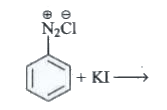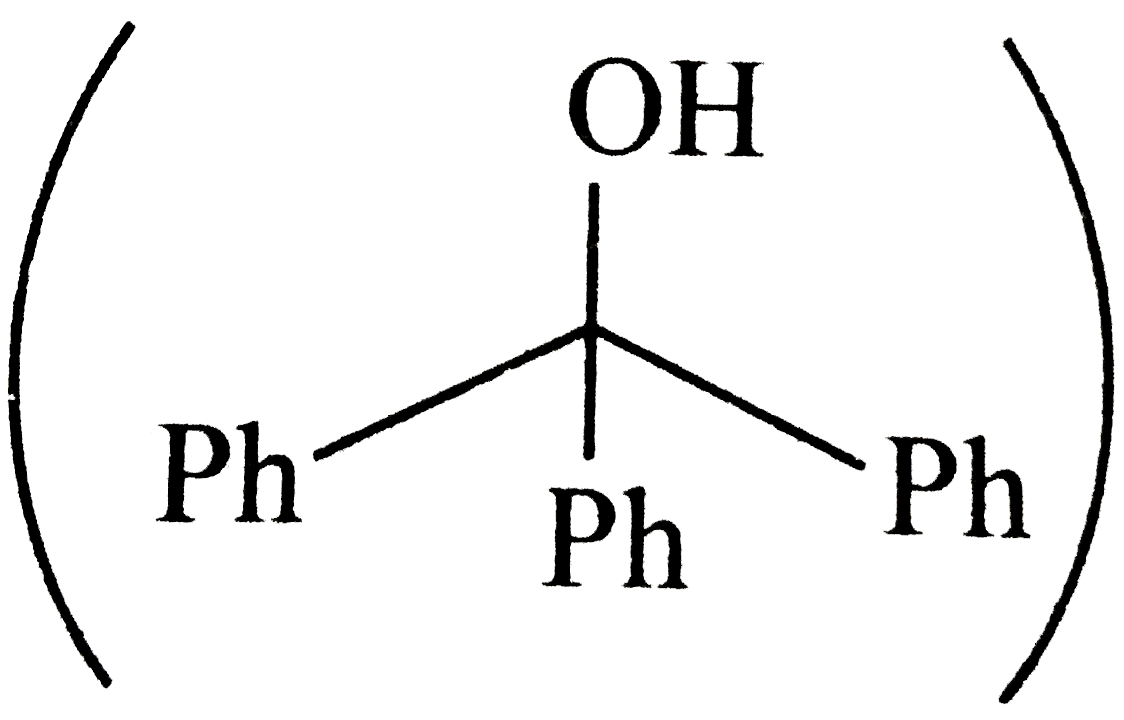Acetophenone can be obtained by the reaction of PhMgBr and.
Ethane nitrile
Ethanamide
Ethanoyl chloride
Methanamide
The correct Answer is:A, B
To determine which compound can react with phenyl magnesium bromide (PhMgBr) to yield acetophenone, we will analyze the possible options step by step.
Step 1: Understanding the Reaction
Phenyl magnesium bromide is a Grignard reagent, which is a strong nucleophile. It can react with carbonyl compounds to form alcohols after hydrolysis. In this case, we want to obtain acetophenone, which has the structure:
Acetophenone: C6H5C(O)CH3
Step 2: Analyzing the Options
We need to identify which compounds can react with PhMgBr to yield acetophenone.
Option A: Ethanenitrile (Acetonitrile)
1. Reaction with PhMgBr:
- Ethanenitrile (CH₃C≡N) can react with PhMgBr.
- The reaction will involve the nucleophilic attack of PhMgBr on the carbon of the nitrile group, leading to the formation of an intermediate.
2. Hydrolysis:
- Upon hydrolysis, this intermediate will yield acetophenone.
Option B: Ethanoamide (Acetamide)
1. Reaction with PhMgBr:
- Ethanoamide (CH₃C(O)NH₂) can also react with PhMgBr.
- The nucleophilic attack will occur at the carbonyl carbon of the amide.
2. Hydrolysis:
- Hydrolysis of the resulting intermediate will again yield acetophenone.
Step 3: Evaluating Other Options
Option C: Ethanoic Chloride (Acetyl Chloride)
1. Reaction with PhMgBr:
- Ethanoic chloride (CH₃C(O)Cl) will react with two moles of PhMgBr.
2. Outcome:
- This reaction will yield a tertiary alcohol, not acetophenone.
Option D: Methanamide (Formamide)
1. Reaction with PhMgBr:
- Methanamide (HCONH₂) will react with PhMgBr.
2. Outcome:
- This reaction will yield benzaldehyde (C₆H₅CHO), not acetophenone.
Conclusion
From the analysis, we find that both ethane nitrile and ethanoamide can react with phenyl magnesium bromide to produce acetophenone. Therefore, the correct answers are:
Answer: Ethanenitrile and Ethanoamide.
Phenyl magnesium bromide is a Grignard reagent, which is a strong nucleophile. It can react with carbonyl compounds to form alcohols after hydrolysis. In this case, we want to obtain acetophenone, which has the structure:
We need to identify which compounds can react with PhMgBr to yield acetophenone.
1. Reaction with PhMgBr:
- Ethanenitrile (CH₃C≡N) can react with PhMgBr.
- The reaction will involve the nucleophilic attack of PhMgBr on the carbon of the nitrile group, leading to the formation of an intermediate.
2. Hydrolysis:
- Upon hydrolysis, this intermediate will yield acetophenone.
1. Reaction with PhMgBr:
- Ethanoamide (CH₃C(O)NH₂) can also react with PhMgBr.
- The nucleophilic attack will occur at the carbonyl carbon of the amide.
2. Hydrolysis:
- Hydrolysis of the resulting intermediate will again yield acetophenone.
Option C: Ethanoic Chloride (Acetyl Chloride)
1. Reaction with PhMgBr:
- Ethanoic chloride (CH₃C(O)Cl) will react with two moles of PhMgBr.
2. Outcome:
- This reaction will yield a tertiary alcohol, not acetophenone.
1. Reaction with PhMgBr:
- Methanamide (HCONH₂) will react with PhMgBr.
2. Outcome:
- This reaction will yield benzaldehyde (C₆H₅CHO), not acetophenone.
From the analysis, we find that both ethane nitrile and ethanoamide can react with phenyl magnesium bromide to produce acetophenone. Therefore, the correct answers are:
Topper's Solved these Questions
- GRIGNARD REAGENTS AND ORGANOMETALLIC REAGENTSBOOK - CENGAGE CHEMISTRY ENGLISHCHAPTER - GRIGNARD REAGENTS AND ORGANOMETALLIC REAGENTSEXERCISE - Exercises (Single Correct)
47 Videos
- GRIGNARD REAGENTS AND ORGANOMETALLIC REAGENTSBOOK - CENGAGE CHEMISTRY ENGLISHCHAPTER - GRIGNARD REAGENTS AND ORGANOMETALLIC REAGENTSEXERCISE - Exercises Archives (Single Correct)
4 Videos
- GRIGNARD REAGENTS AND ORGANOMETALLIC REAGENTSBOOK - CENGAGE CHEMISTRY ENGLISHCHAPTER - GRIGNARD REAGENTS AND ORGANOMETALLIC REAGENTSEXERCISE - Exercises (Linked Comprehension)
33 Videos
- GENERAL PRINCIPLES AND PROCESS OF ISOLATION OF ELEMENTSBOOK - CENGAGE CHEMISTRY ENGLISHCHAPTER - GENERAL PRINCIPLES AND PROCESS OF ISOLATION OF ELEMENTSEXERCISE - Archives (Subjective)
14 Videos
- NCERT BASED EXERCISEBOOK - CENGAGE CHEMISTRY ENGLISHCHAPTER - NCERT BASED EXERCISEEXERCISE - Nuclear Chemistry (NCERT Exercise)
29 Videos
Similar Questions
Given below are some standard heats of reaction:
a. Heat of formation of water =−68.3kcal
b. Heat of combustion of acetylene =−301.6kcal
c. Heat of combistion of ethylene =−337.2kcal
Calculate the heat of reaction for the hydrogenation of acetylene at constant volume at 25∘C.
View SolutionHexan-3-one can be obtained by the reaction of EtMgBr and.
View Solution
Knowledge Check
Acetophenone can be obtained by the distillation of
A(C6H5COO)2CaB(CH3COO)2CaC(C6H5COO)2 and(CH3COO)2CaD(C6H5CO)2Ca and (HCOO)2CaBenzene can be obtained by :
AC6H5OH+NaOHCuO−−→ΔBC6H5OH+ZnΔCC6H5−N=N−Cl+H2O→DAll of theseIodobenzene can be obtained by :
A B
B C
C D
D

 can be obtained by the reaction of
can be obtained by the reaction of